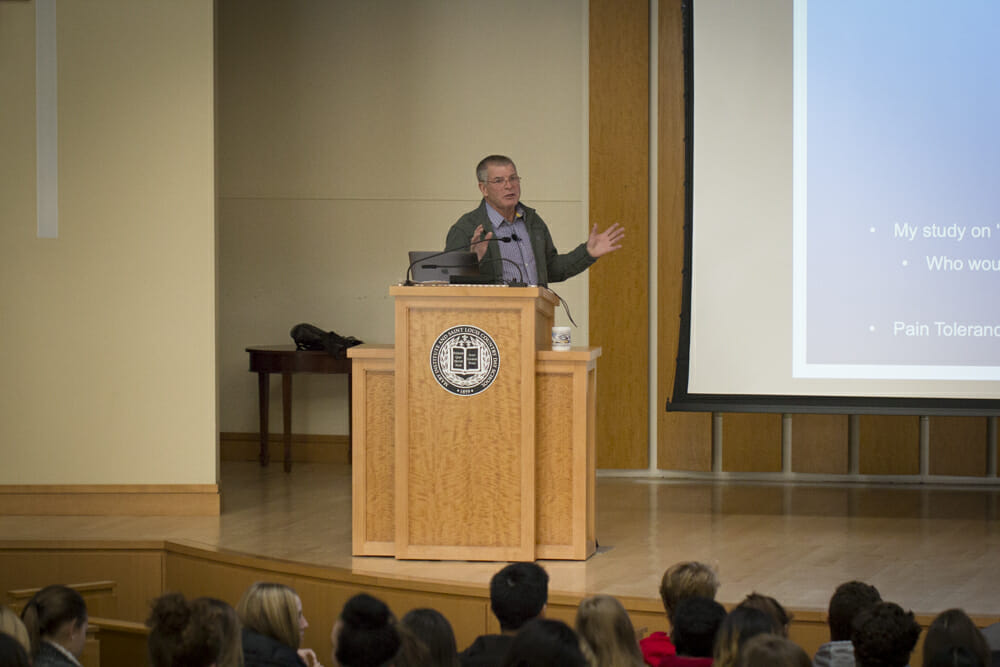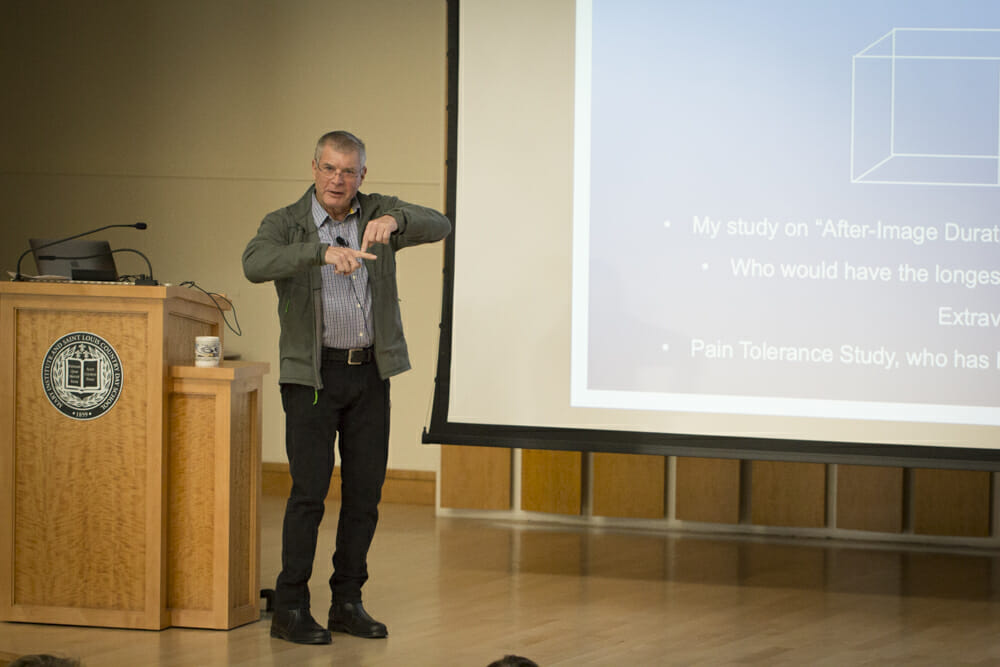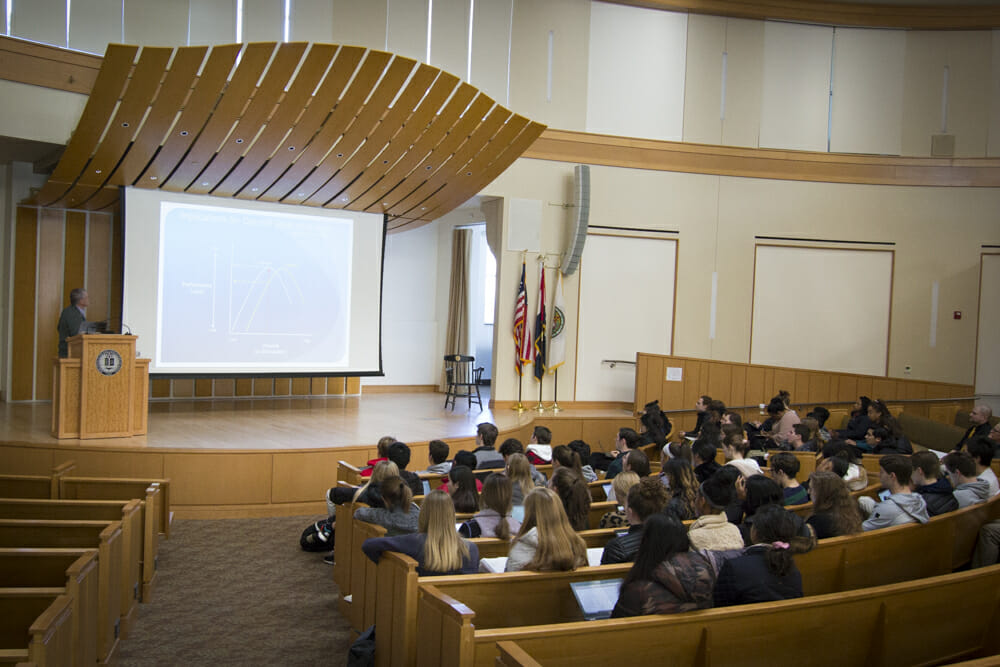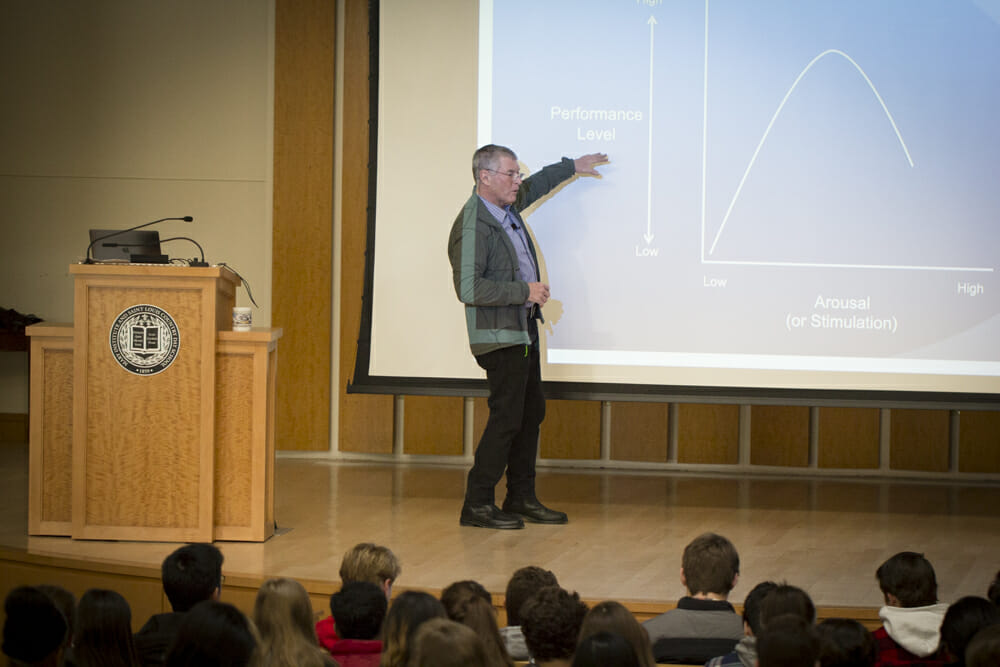All four sections of our AP Psychology classes had the privilege of learning from psychologist and MICDS parent Dr. Randy Larsen this week. With a lifetime of experience in the field, the Washington University educator and researcher shared a wealth of information including insight into the primary research that he conducts. As you’ll see in the video below, our psychology students were in for a treat!
As a guest speaker, Larsen delivered a presentation followed by a Q&A. He talked about introverts and extraverts, explaining that the range of extraversion and introversion follows the pattern of a normal distribution. While most people fall somewhere in the middle, he focused his talk on analyzing the extremes.
He stated that socializing appears to factor into one’s introverted or extraverted nature, citing the Office Design Study where those who work in groups tend to be more extraverted while those who work by themselves tend to be more introverted. He talked about Eysenck’s theory and the reticular activating system which, in layman’s terms, is the brain’s gateway for letting in sensory information. For extraverts, this gateway is closed and needs stimulation, often found through social activity. For introverts, this gateway is open and already overstimulated, so folks who are introverts need to withdraw from the stimulation, often selecting quieter experiences.
Larsen talked about Ivan Pavlov and various experiments in relation to this topic. He shared how you can look at a drawing of the outline of a cube and see how much it flips its orientation; those who see it flip more are introverts. He described research on after-images, which are the lingering flashes of light one sees after a flash photograph is taken due to the overstimulation of the retinal nerve. Introverts, he shared, see after-images longer than extraverts. He shared that extraverts have a high tolerance for pain and examined how people have different optimal levels of arousal or excitement in which they achieve peak performance. He even talked about his “Psychedelic Lab,” titled by his students. Overall, he demonstrated that the dimension of extraversion and introversion is about reactivity and arousability.
The talk concluded with a Q&A where students picked Larsen’s brain about happiness, the Big Five personality traits and how we can manage stress more positively. What a wonderful way the talk could “extend the core content we’ve been learning,” shared Upper School Psychology and Math Teacher Aaron Proctor. Thank you, Dr. Larsen!
Watch the video of Dr. Larsen’s presentation below.



